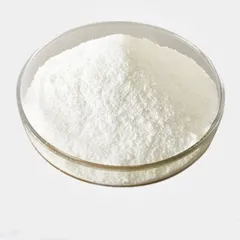- Home
- Products
- Elementary
- Boride Powder
- 3D Printing Powder
- Sulfide Powder
- Oxide Powder
- Carbide powder
- Nitride Powder
- Silicide Powder
- Hydride Powder
- Telluride Powder
- Selenide Powder
- Stearic Acid Series
- Phosphide Powder
- Nanoparticles
- Metal Alloy
- MAX Phase
- Lithium Battery Anode
- Surfactant
- Molecular sieves
- Concrete Admixtures
- Cladding of metals
- News
- Blog
- Contact
- About
Nano Silicon Dioxide Powder SiO2 Nanoparticles
Nano Silicon Dioxide Powder SiO2 Nanoparticles is white powder with excellent chemical stability. It has the attributes of little fragment size, numerous micropores, large particular area, high hydroxyl web content on the surface area.
Description of Nano Silicon Dioxide Powder SiO2 Nanoparticles:
Small particle size and large specific surface area: The particle size of nano-silica is usually below 100 nm, increasing its particular surface area and providing more reactive active sites.
High purity: nano-silica has high purity, in which the content of impurities and harmful substances is low, which improves its quality and reliability.
Good dispersion: Nano silica has excellent distribution and can be well dispersed in the solvent to form a stable suspension, which provides convenience for its use in practical applications.
Insulating properties: nano-silica has good insulating properties and can be used to manufacture insulating and protective layers of electronic devices.
Biocompatibility: Nano-silica is harmless to the human body and has good biocompatibility, which can be used in drug carriers, biological scaffolds and biomedical fields.
Machinability: nano-silica has good machinability and can be prepared into products of various shapes and sizes through multiple technologies such as sintering, injection molding, etc.
Chemical stability: Nano silica has excellent chemical stability and can remain stable in high temperatures, strong acids, strong alkalis and other environments, and will not be decomposed or oxidized.
Optical properties: nano-silica has high light transmittance and reflectivity and can be used as a raw material for optical devices, such as photocatalytic Windows, solar panels, etc.

Production Method of Nano Silicon Dioxide Powder SiO2 Nanoparticles:
Chemical vapor deposition: It is an essential method for preparing nanomaterials. This method uses silicon compounds and oxygen as raw materials, and chemical reactions are carried out at high temperatures to generate nano silica particles. According to the different reaction conditions, nano-silica powders with different particle sizes and morphology can be prepared. The chemical vapor deposition method has high purity and efficiency advantages, but the equipment investment and production cost are significant.
Sol-gel method: The sol-gel method is a method of preparing nanomaterials based on liquid phase chemical reaction. The silica sol was obtained by mixing the silicon compound with a suitable solvent, adding an appropriate amount of reducing agent and stabilizer, and heating and stirring the reaction. Nano silica powder was obtained after the sol was treated by gelation, drying and grinding. The sol-gel method can achieve industrial production, but the raw material cost is high and may produce toxic and harmful gases.
Liquid phase method: The preparation of nano silica by liquid phase method usually includes hydrolysis, precipitation, crystallization and other steps. In this method, silicon salt solution is used as raw material, and by controlling reaction conditions (such as temperature, pH value, reaction time, etc.), silicon salt is hydrolyzed to produce silicon dioxide precipitation. The precipitate was filtered, washed, dried and ground to obtain nano silica powder.
Microemulsion method: It is a method of preparing nanomaterials using a microemulsion system as the reaction medium. This method forms a microemulsion system by mixing silicon-containing compounds with appropriate solvents and surfactants. In the microemulsion system, the silicon-containing compounds react with oxygen to form nano-silica particles. The silica particles were dispersed and stabilized in the microemulsion. After separation, washing and drying, nano silica powder was obtained. The microemulsion method has high purity and dispersion advantages, but the raw material cost is high, and it may produce poisonous and harmful gases.
Combustion method: Combustion method is a method of preparing nanomaterials using combustion reaction. In this method, silicon-containing compounds are mixed with fuel, and the combustion reaction is carried out at high temperatures to generate nano silica particles. The combustion method has the advantages of high purity and high efficiency, but a lot of heat is generated in the production process, which requires specific cooling and separation technology.
Applications of Nano Silicon Dioxide Powder SiO2 Nanoparticles:
Coating industry: nano-silica has high transparency and good dispersion and can produce coatings with high transparency, adhesion, and weather resistance. Adding nano-silica can significantly improve the coatings' anti-scratch, anti-ultraviolet aging and anti-corrosion properties.
Ceramic and glass industry: nano-silica can produce ceramics and glass products with high strength, toughness and high heat resistance.
Electronic industry: nano-silica has excellent insulation properties and stable physical and can be used to produce insulating and protective layers of electronic devices. The addition of nano-silica can significantly improve the stability and reliability of electronic devices.
Biomedical field: Nano-silica has excellent biocompatibility and good drug carrier performance and can be used in biomedical areas such as drug delivery and biological scaffolds. Adding nano-silica can significantly improve the effectiveness and safety of the drug.
Environmental protection: nano-silica has excellent adsorption and photocatalytic properties and can be used for sewage treatment and air purification in ecological protection. The addition of nano-silica can significantly improve the treatment effect and purification efficiency.
Synthetic Chemical Technology Co. Ltd. , is a trusted international chemical product supplier & manufacturer with over 12-year-experience in offering extremely top quality chemicals and also Nanomaterials, consisting of boride powder, nitride powder, graphite powder, sulfide powder, 3D printing powder, and so on.
If you are seeking top quality nano SiO2 powder, please really feel free to contact us and also send a query. (sales5@nanotrun.com)
Inquiry us
PREVIOUS Nanoparticles
High Purity Aluminum Nanoparticles Nano Al Powder CAS 7429-90-5, 99%
NEXT Nanoparticles